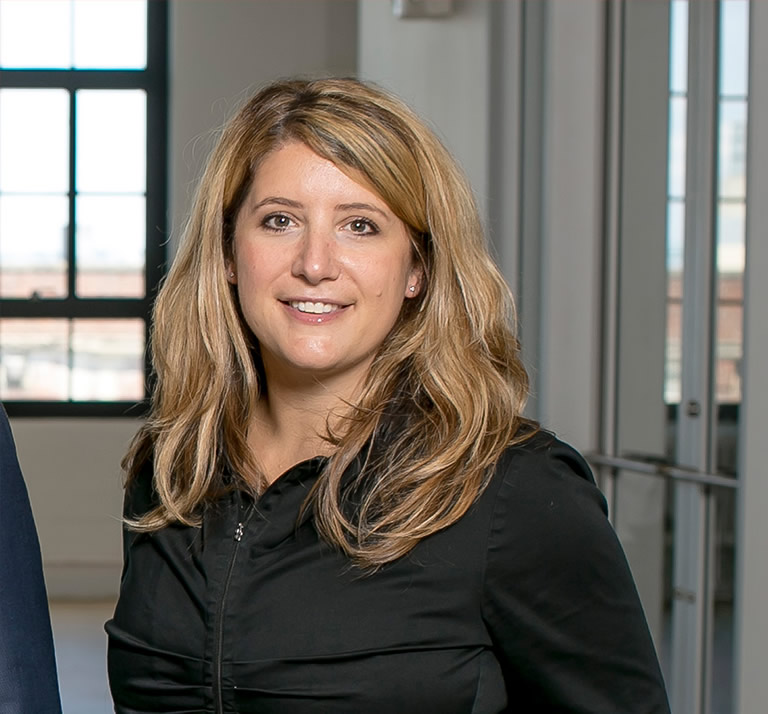Date
September 28, 2016

Jeannie Thacker, AIA, NCARB, LEED AP BD+C
Article originally appeared in Laboratory Design on September 28, 2016.
Laboratory Design spoke with Jeannie Pierce Thacker, AIA, LEED AP BD+C, principal and co-founder of Boston-based architectural practice TRIA. Her ability to speak “scientist” helps to establish initial trust and early project consensus that affords additional opportunities for improved function, design and goal alignment on even the most technical projects.
How did you get into your field?
I used to be an end user in the lab! I have an undergraduate degree in Biology and landed my first job as a researcher in Cambridge, the biggest biotech hotbed in the world. Over the better part of a decade, I moved from a small research manufacturing company, to Harvard Medical School, to Takeda (then Millennium Pharmaceuticals). From these positions, I gained an amazing amount of firsthand experience about everything from R&D, to manufacturing, academia and drug pipelines. I knew I needed to get an advanced degree in order to further my career. But I was also feeling disconnected from patients while working at the bench. I had been the point person for several lab moves and liaised between the user group and A/E/C teams, and thought, “if I could start over again, I’d be an architect.” And then I found a way to do exactly that! And I’ve been specializing in lab design ever since. I love creating spaces that are scientist centric and help to keep the researchers motivated and connected to their core mission.
What’s the most surprising thing you’ve learned in your career?
The most surprising thing that I’ve learned from my experience is how much I did not know about how labs function as an end user. During one of our lab moves, I remember going on the walkthrough of our new space a few days before our move. I pointed to a fume hood and said, we have been talking and decided it would be best if this was over there instead, can you move that?” The contractor’s reply was a hearty laugh. I didn’t know that the fume hood was a monument and all the intricacies of exhaust, gasses, and electrical grounding that were involved. I only knew it as the proper place to conduct a specific assay or use noxious chemicals. As an end user, the functionality of the lab is all about work flow-supply, prep, and equipment locations. While on the design side, the functionality is hidden in ceilings, walls, penthouses etc., all unseen and unknown to the end users.
What do you consider the highlight of your career?
Co-founding TRIA! My career has been on a great trajectory, albeit a unique one. That success has been mostly due to a core philosophy of focusing on the client and building a strong partnership. When that connection is made, there is a responsibility to do meaningful work, and therefore great design. At the end of the project, there is no break-up, but rather a solid foundation to support a long-term relationship. At TRIA, we have built the firm on this innate mission: to value client relationships above all. It’s who we are, what we do, and what sets us apart. What’s amazing too is that this tenet has drawn together such a talented group of people. The dynamic and energy in our office is so motivating and I feel so fortunate to be part of this incredible team. Also the encouragement and support that we have had from our clients and partners is better than I ever could have imagined.
If you could give just one piece of advice to others in your field, what would it be?
The end user sitting across from you is brilliant, and they have an area of expertise…but it’s not building design and construction. That’s your area of expertise, so embrace it and put it to work. The end user’s area of expertise most likely has something to do with ridding the world of rare diseases, so don’t ask them what cfms they want or if their VCT needs to be low VOC. (They have their own acronyms, and you need to learn them!) The correct questions to ask are those that clarify the processes and functional needs of the space. Be proactive about gathering the information you need with the least burden on the client. That’s how to add value to the design process.
What advice do you have for people just starting their career, or for students who are thinking of majoring in architecture/engineering/etc.?
For most people graduating from architecture school, there is quite a shock. In school, you study iconic structures and the works of masters, all while creating studio projects only limited by your own imagination. The contrast in that training to what a typical day looks like for a recent graduate causes most people to become quickly disenchanted. My advice would be to not lose the love for design and ingenuity and find opportunities to be creative in all your tasks. Learn how to thrive in a cooperative setting, always put the client first, and capitalize on your strengths. And start taking your registration exams right away. The longer you wait, it becomes exponentially harder to prioritize this goal.



